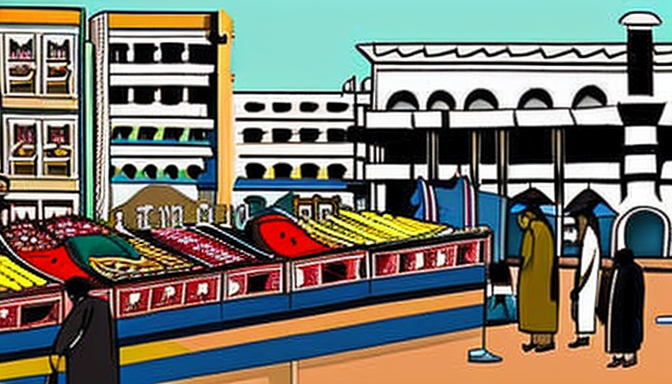Karachi, once a humble fishing village, has transformed into one of the largest cities in Pakistan. Its journey is nothing short of fascinating. Imagine a place where the waves of the Arabian Sea once lapped against the shores, and now bustling streets echo with the sounds of millions. What events shaped this vibrant city? Let’s take a stroll through time to uncover the pivotal moments that defined Karachi.
In the early days, Karachi was a small settlement known for its rich fishing grounds. As the British arrived in the 19th century, they recognized its potential. They developed the port, turning it into a critical trade hub. By the late 1800s, Karachi was bustling with activity, attracting people from all walks of life. The city became a melting pot of cultures, each adding its unique flavor. Can you picture the vibrant markets filled with spices, textiles, and stories?
Fast forward to the 20th century, and Karachi faced new challenges. The Partition of India in 1947 brought an influx of refugees, drastically changing its demographic landscape. The city had to adapt quickly, leading to both opportunities and struggles. Today, Karachi stands as a testament to resilience. Despite facing urbanization issues and political turmoil, it continues to evolve. Isn’t it remarkable how a city can embody both chaos and beauty?
In summary, Karachi’s history is a rich tapestry woven with threads of change, challenge, and triumph. Each event has left an indelible mark, shaping its identity as a major city in Pakistan. What will the next chapter hold? Only time will tell.
The Founding and Early Development
Karachi’s story begins as a humble fishing village. In the early days, it was just a small settlement along the Arabian Sea. Imagine a place where the sound of waves and the calls of fishermen filled the air. This was Karachi in the 18th century. But, things were about to change.
As the British East India Company expanded its reach, Karachi caught their eye. In 1839, the British took control, transforming it into a bustling port city. This was a turning point. With the arrival of new trade routes, Karachi became a commercial hub. Ships from all over the world docked at its shores, bringing goods and ideas.
By the late 19th century, the city was growing rapidly. The population swelled as people from different regions flocked to Karachi, seeking better opportunities. This mix of cultures created a vibrant community. Streets were filled with markets, and the air buzzed with energy. Can you picture it? A melting pot of traditions and languages.
In 1857, the city faced challenges during the Indian Rebellion. Yet, it emerged stronger. The British invested in infrastructure. Roads, railways, and schools began to shape the city. By the early 20th century, Karachi was not just a port; it was a city with a unique identity.
Today, we can see the remnants of this early development. From colonial architecture to bustling bazaars, Karachi’s past is woven into its present. It’s a reminder of how far this city has come, evolving from a small fishing village to a major urban center. What a journey it has been!

Modern Challenges and Transformations
Karachi, once a quaint fishing village, has undergone a remarkable transformation. Today, it stands as one of the largest cities in Pakistan. However, this growth hasn’t come without its share of challenges. Urbanization is one of the most pressing issues. The city’s population has surged, leading to overcrowding and strain on resources. Can you imagine living in a city where the streets are packed and public services struggle to keep up?
Political strife has also played a significant role in shaping Karachi’s modern landscape. The city has seen its fair share of unrest and turmoil, which has impacted its economic stability. Businesses often face uncertainty, and residents live with the constant worry of safety. To put it simply, Karachi is a city of contrasts. It’s vibrant and full of life, yet it grapples with serious issues that affect daily living.
Economic challenges are intertwined with these political and urban issues. Job opportunities are scarce, leading to high unemployment rates. Many people are left searching for work in a city that promises so much but often delivers little. The local government is working hard to tackle these problems, but progress is slow.
In summary, Karachi is at a crossroads. The city is evolving, but it must address these modern challenges to continue thriving. As it navigates through these turbulent waters, the resilience of its people shines through. They are the heartbeat of this bustling metropolis, facing the future with hope and determination.
Frequently Asked Questions
- What is the historical significance of Karachi?
Karachi has a rich history, evolving from a small fishing village to a major port city during the British colonial period. Its strategic location has made it a hub for trade and culture, influencing its development over centuries.
- What modern challenges does Karachi face?
Today, Karachi grapples with issues like rapid urbanization, political instability, and economic struggles. These challenges have shaped its identity and continue to impact the lives of its residents.
- How has Karachi’s culture evolved?
The culture of Karachi is a vibrant tapestry woven from various influences, including its history as a trading port and the diverse communities that call it home. This evolution reflects in its cuisine, arts, and festivals.
- What role does Karachi play in Pakistan’s economy?
As Pakistan’s largest city, Karachi is the economic powerhouse of the country, contributing significantly to trade, industry, and finance. Its bustling ports and markets are vital for the national economy.